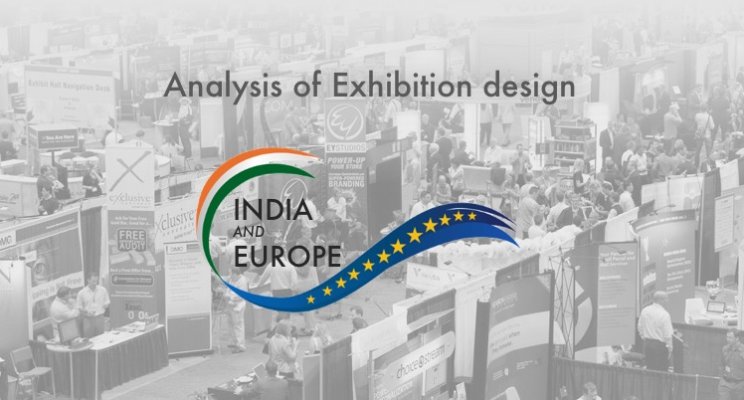Exhibition Design language of Indian and European Exhibitors
Analysis of some elements of these two distinct styles
Over the last decade, I have had the opportunity to work closely with Indian as well as European exhibitors at various exhibitions globally. Many a times when shuffling between the stand design of an Indian exhibitor and the stand design of a European exhibitor; I have noticed a considerable difference in their design language.
Something about the two styles is fairly distinct and obvious to the eye. So I thought of analysing few elements which made these two design types different from each other.
Function vs Form: The stand designs of the Indian exhibitors are very focused on ‘Form’- heavy eye catchers or fascia structures, preference for curves or complex overlapping shapes are often seen in Indian stalls and exhibitions. It possibly is a reflection of the inherent love for spices, colours and loud music in the Indian culture that gets translated into the preference for loud & and fancy structures.
The European design interpretation of Form is different and typically more linear with sparser use of curves or complicated shapes in the exhibition booths.
On a closer study I also felt that the European designs give more weightage to the ‘functional aspects’ of the design; which may be getting second priority in the Indian exhibition design dictionary.
Less said, more spoken: The Indian exhibits normally feature several communication panels with a fair amount of text in it.
The difference in approach towards Function vs Form is also seen in the communication strategy and graphic elements
The European design language, on the other hand seek inspiration from the philosophy of less said, more spoken – fewer graphics, fewer visuals, larger sized and crisp content.
Limited Colour Palette: The European designs features a more restrained colour palette; working with hues and tones that match the brand colour. The attention paid to matching the exact brand colour across different materials i.e. from the wall colour to the upholstery deserves a special mention!
The Indian exhibitors are comparatively more experimental and often go beyond the brand colours exploring different colour schemes at different times.
Lighting: Both the Design languages pay their fair share of attention to Lighting; albeit in a different interpretation. The Indian stands prefer extremely brightly-lit uniform lighting throughout the stand, with a common preference for white light. The European designs are more experimental with lighting and create different levels of lighting within the booth. A common style is treating the exhibit or product display areas with brighter lighting and using a softer lighting in the engagement or discussion areas.
Usage of Floor Space: There is also a difference between the ‘planned density’ of available spaces.
The Indian stalls prefer to optimise the available space down to the centimetre. The display areas or discussion tables in the Indian layouts follow a compact approach, with everything placed fairly close to each other.
The European designs are more generous towards empty spaces. On the floor plan their elements are usually more spaced out from each other.
The discussion of such elements can sometimes help the Exhibitor and Stand Designer plan their Design more meticulously, as per their marketing and brand objectives. These were some of the differences I could observe between both the exhibiting styles – Indian and European. Of course, I am generalising the trends for both groups here and there will always be exceptions.
Do you have another such observation?
Please share in the comments box below !
*********************************************************************
Author: Rohit Saraogi is a co-founder & Director at Design Desk – a leading Exhibition & Environment Design Agency in India since 2005.
Connect with Rohit on Linked In.
For more updates follow Design Desk on LinkedIn, Twitter, Facebook & Youtube.




